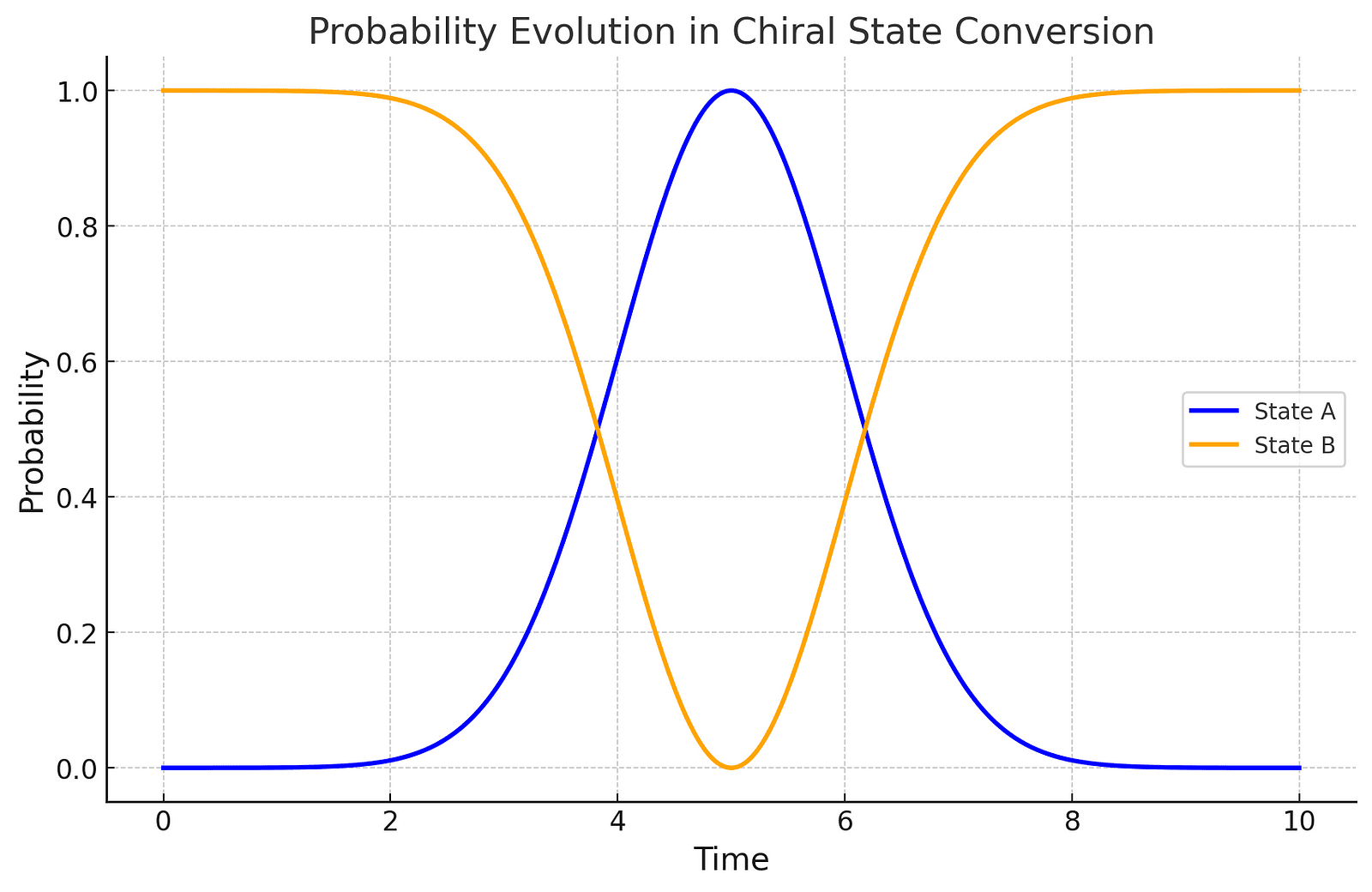
Quantum mechanics is like the universe’s rulebook, and for over a century, it’s been our guide to understanding the most fundamental aspects of reality. But buried within this seemingly unbreakable rulebook is a paradox that has puzzled scientists for decades: the measurement problem. This problem lies at the heart of quantum theory, where particles exist in a superposition of states until they are measured. The act of measurement seems to “collapse” this superposition, forcing the particle to choose a single state. This collapse is non-unitary, meaning it doesn’t follow the usual reversible laws of quantum mechanics. The big question has always been: what causes this collapse? Recent research provides a potential answer through a new model that uses non-Hermitian Hamiltonians — a kind of mathematical tool that challenges our traditional understanding of quantum systems.
The Power of Non-Hermitian Dynamics
Non-Hermitian dynamics are like the secret ingredient in this quantum mystery. Unlike traditional Hamiltonians, which preserve probabilities and keep things reversible, non-Hermitian Hamiltonians introduce something new — decay, gain, and even a kind of quantum asymmetry. These Hamiltonians don’t play by the usual rules, and that’s exactly why they might hold the key to understanding quantum collapse. The research shows that if a quantum measurement is modeled as a process occurring over time within a non-Hermitian framework, the Hamiltonian undergoes a closed loop in the parameter space. This loop acts like a guide, steering the system from a state of uncertainty to a definitive outcome. It’s this chiral state conversion, where initial superpositions break down into one clear state, that mimics the quantum collapse. This insight isn’t just theoretical; it could pave the way for new technologies that simulate quantum measurements in classical systems.
Chiral State Conversion: The Collapse Mechanism
One of the most fascinating phenomena explored in this research is chiral state conversion. Imagine a two-level quantum system — like a switch with two possible states. When the system’s Hamiltonian completes a loop in its parameter space, the initial state doesn’t just revert to its original form. Instead, it undergoes a conversion to a preferred state, determined by the direction of the loop. This directional preference is what breaks the superpositions, effectively collapsing the wave function. The process is counterintuitive, defying the usual adiabatic expectations where a system would gradually return to its starting point. This chiral behavior introduces an inherent asymmetry into the quantum world, making it possible to simulate the collapse without the need for a complex measurement apparatus. It’s like watching a quantum coin toss where the outcome is biased by the very path the coin takes in the air.
Here is a graph below that visualizes the probability evolution in chiral state conversion. It illustrates how the probabilities for two quantum states evolve over time, highlighting the switch in dominance between the two states as time progresses.

The Future of Quantum Measurements
The implications of this research are nothing short of revolutionary. By simulating quantum measurements using non-Hermitian dynamics in classical systems, we might be on the brink of developing new quantum technologies that don’t even require quantum materials. This could lead to breakthroughs in fields ranging from cryptography to materials science, where understanding and controlling quantum collapse is crucial. Moreover, it opens up the possibility of creating quantum-inspired sensors that are incredibly sensitive to minute changes in their environment, all thanks to the exceptional points that these non-Hermitian Hamiltonians bring into play. The future of quantum measurement might not lie solely in the quantum realm but in the clever manipulation of classical systems to emulate the behavior of their quantum counterparts.
The Quantum Rulebook’s Biggest Mystery
Quantum mechanics is arguably the most successful theory in physics, but it hides a deep mystery: the measurement problem. This problem questions why quantum particles, which can exist in multiple states simultaneously, suddenly “choose” a single state when observed. The process of this “collapse” has baffled scientists since quantum mechanics was first proposed, and it remains one of the most debated topics in the field.
Non-Hermitian Hamiltonians Are Game-Changers
Unlike traditional Hamiltonians that govern quantum systems by preserving probability, non-Hermitian Hamiltonians introduce elements like decay and gain. This makes them incredibly useful for modeling systems where energy is not conserved, like in quantum measurements. These Hamiltonians can even simulate quantum phenomena in classical systems, opening up new avenues for research and technology.
Chiral State Conversion Defies Quantum Intuition
In quantum mechanics, adiabatic processes usually mean that systems will return to their original state after a slow and smooth change. But chiral state conversion flips this idea on its head. When a system undergoes a loop in parameter space, it doesn’t just return to its original state — it converts to a new, preferred state. This unexpected behavior is key to understanding quantum collapse.
The Heart of Asymmetry
Exceptional points are like the quantum world’s version of a cliff edge. They are points where the system’s usual rules break down, leading to dramatic changes in behavior. Near these points, small changes can lead to large effects, which is why they are so important in the study of quantum collapse. These points also allow for the creation of ultra-sensitive sensors that could revolutionize various technologies.
Classical Systems Can Mimic Quantum Behavior
One of the most exciting outcomes of this research is the idea that classical systems — like electrical circuits or photonic lattices — can be used to mimic quantum measurements. By carefully designing these systems to include non-Hermitian dynamics, researchers can simulate the process of quantum collapse, providing a new way to study quantum mechanics without needing a quantum computer.
A New Era in Quantum Technology
The research on non-Hermitian dynamics isn’t just another step in the understanding of quantum mechanics. It’s a leap toward a future where quantum phenomena can be replicated and studied in classical systems. This could mean that the mysteries of the quantum world, like the elusive wave function collapse, are no longer confined to the realm of the microscopic. Instead, they can be brought into our everyday world, making quantum technology more accessible and opening up new possibilities for innovation. The future is bright, filled with the promise of quantum-inspired technologies that could change how we understand and interact with the world around us.
About Disruptive Concepts
https://disruptive-concepts.com/
Welcome to @Disruptive Concepts — your crystal ball into the future of technology. 🚀 Subscribe for new insight videos every Saturday!
Discover the Must-Have Kitchen Gadgets of 2024! From ZeroWater Filters to Glass Containers, Upgrade Your Home with Essential Tools for Safety and Sustainability. Click Here to Transform Your Kitchen Today!







